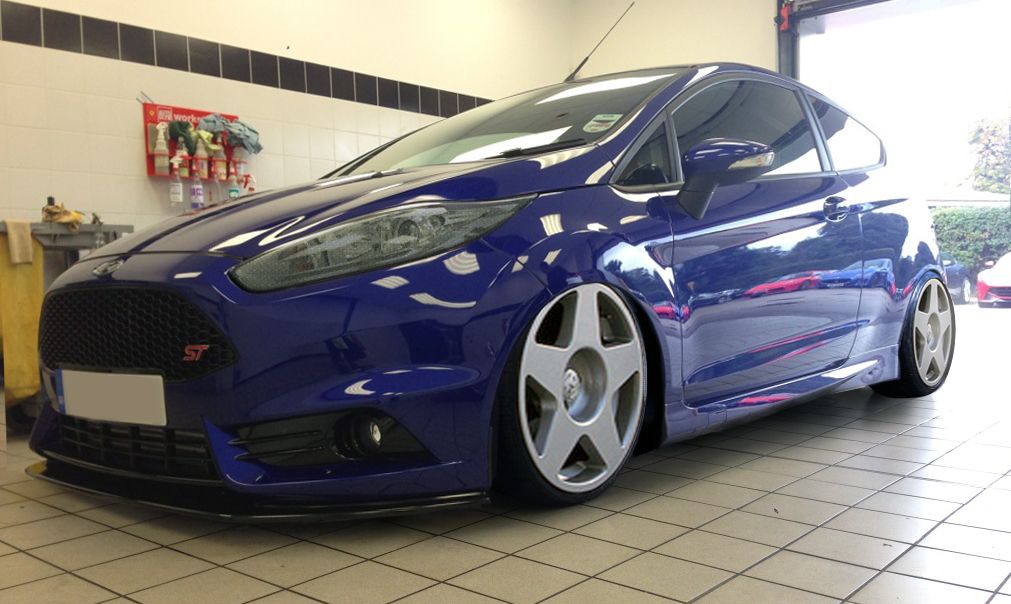Though a Fiesta ST forum my posts are about Extreme Stance on any vehicle.
They are not about a particular brand, or different levels of stance, just about Extreme that includes massive camber, very narrow tires on wide wheels and overly lowered and for very valid reasons which are readily quantifiable in hundreds of books on suspension, physics, structural engineering, magazine articles, etc.......
Of course all the principles apply to lowering, adding camber, etc...to any car or truck, this is about pointing out the seriousness of what happens to an Extreme Stacned vehicle. These are hard issues that cannot be wished away, they are there until dealt with, something fails, something happens.....
The results become compounded when you look at all the issues involved.
Extreme lowering will lift the roll center and the leverage of this will put nearly all the weight of the vehicle on the outside tires.
Extreme lowering will induce added bump steer causing the steering angle to change when hitting a bump, unsettling the car.
Extreme lowering will reduce suspension travel and cause bottoming out in some situations, which causes the contact patch to be lifted.
Extreme camber reduces the contact patch of that tire causing reduced grip, traction, braking force and added heat which can lead to catastrophic failure.
Extremely stiff springs, which I image most would have to use to deal with such little travel, cause loss of grip over bumps
Extremely narrow tires reduces the contact patch even further.
Extreme lowering will add stress to structural members, attachment points, fasteners and suspension joints, steering gear, wheels and tires.
Extreme offset wheels, add stress to ball joints and change the scrub radius of the tires(if extreme offset wheels are used)
These all add up compounding the issue, why it is a bigger safety situation than may be readily apparent.
Extremely stanced FWD, one much less than optimal tire is now doing nearly all the work which it was not designed to do.
Extremely stanced RWD, at least forward grip is shifted to the rear tire relieving the overly worked front tire with a little less overload.
Ways to at least lesson some of the compounding issues, not all are compatible together as deal with issues different ways:
Roll center correction by lowering the outer lower ball joint or raising the inner pick up point at the chassis
Bump steer correction, lowering the outer tie rod end pivot point or raising the steering rack.
Add suspension travel and use softer springs
Inner fender height raised so the added travel will not cause the tire to contact the body which could cause several issues at the same time.
Proper bump stops, which are an integral part of the suspension, calibrated to not just stop impact but to slow it in a progressive state.
Reduce Positive caster, this will tilt the tires less while turning since to much static camber is already dialed in.
Reduce Negative camber for better tire contact
Raise ride height to reduced roll center and bump steer
Use wider tires and or narrower wheels
Use offset wheels that place the center of the wheel in the same place as the stock wheels, this means wider wheels need different offsets than narrower wheels.
This is posted so those that do not have access to this information can better make wise choices in their mod plans and hopefully build a safer and more reliable car, or truck.
Have a great weekend

Rick










